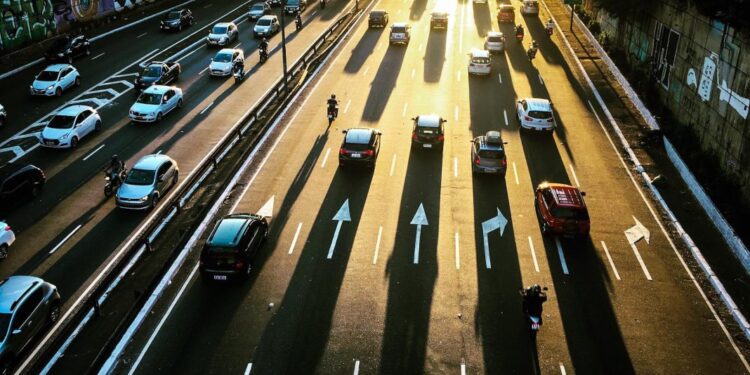Almost everyone has experienced this at least once: you hear the wailing sirens before you notice the blinking lights. You understand the necessity of moving aside, yet as you approach an intersection, the signal is about to shift—which leaves you with no escape route. There certainly isn’t enough space for an ambulance or fire truck to pass through. They can disregard red lights, but you can’t. This is a desperate predicament for emergency teams hurrying to respond to urgent calls, and it consumes valuable minutes that could determine life or death in cases like cardiac arrest.
But imagine if artificial intelligence could modify traffic signals so that ambulances are never impeded?
Fortunately, that’s already in progress. LYT (pronounced “light”), a traffic technology firm from California, is transforming how first responders navigate to emergency situations. Tim Menard, the founder and CEO, compares this technology to air traffic control, but specifically for land transport. Working in tandem with 911 centers, there exists a traffic management hub dedicated to ensuring the city remains fluid in response to crises.
“Picture if all these elements were interconnected, so when a 911 call is received, you instantly know its location, and then the traffic signals can adjust automatically,” Menard explains. “That’s where the magic lies—leveraging decades of experience to streamline operations through automation, effectively clearing paths.”
Operational Mechanics
Whenever emergency services are dispatched, the system dynamically alters traffic signals, enabling emergency vehicles to consistently receive green lights, thus facilitating the movement of other vehicles out of the way, allowing ambulances, fire trucks, and police cars to proceed. The system not only preemptively modifies lights based on estimated arrival times of emergency vehicles but also adapts in real time according to the vehicle’s current position, ensuring it doesn’t get trapped by a series of red lights due to unforeseen delays.
Localities can establish tailored preferences for the system—deciding, for example, that ambulances receive priority over police vehicles, along with a hierarchy for various emergency types. A call for cardiac arrest might take precedence over a scenario involving a patient whose life is not in imminent danger but requires transport to the hospital. To date, cities including Seattle, Boston, Toronto, Portland, Oregon, Tempe, Arizona, and several others across the U.S. have engaged LYT’s services.
Menard noted that in Sacramento, California, response times saw a remarkable improvement of approximately 70% after collaborating with LYT. By the conclusion of this year, he mentioned that they will be partnering with nearly every major urban area on the West Coast, and onboarding is relatively “plug and play” for cities that have already invested in infrastructure. While there is a requirement for some staff training, compatible systems can be operational on the same day the city enrolls in the service.
Long-term Savings Through AI Investments
LYT’s primary application is for emergency services; however, the same technology can enhance the efficiency of bus operations. This not only benefits bus riders who wish to avoid traffic delays on their commute but also translates into significant cost savings for taxpayers, potentially saving thousands of dollars annually in fuel expenditures and staff overtime with the system working effectively. Menard refrained from disclosing specific costs associated with LYT’s services for municipalities but did mention that partners throughout North America saw a 14% reduction in fuel expenses in 2023.
Similar to emergency vehicles, the system is responsive. Therefore, if a bus encounters a delay, such as needing to assist a passenger, the traffic signals will be programmed to facilitate normal traffic flow until the bus resumes its schedule.
The Real-World Trolley Dilemma
The traditional trolley problem frequently arises in discussions regarding AI’s potential influence on our future. The situation is simple: you are driving a trolley and spot a group of five or six individuals on the tracks ahead. You can’t stop in time, but you can divert the trolley to another track where only one person stands. If you do nothing, six individuals perish; if you redirect, one person dies. Ethicists have dissected this hypothetical scenario extensively, but we now find ourselves in a position to instruct AI on how to handle such dilemmas.
However, according to Menard, AI is likely to act as a more impartial—or at least fair—decider in life-or-death scenarios than flawed human judgment.
“There’s inherent bias that can develop within these systems, and that’s something that is constantly monitored and adjusted in a system like this,” he clarifies. Put simply, the system is impartial. It doesn’t favor an ambulance responding to an incident in an affluent neighborhood over one in a low-income area. While humans may unwittingly exhibit biases, AI can ensure equal treatment for everyone.
“It all depends on the structure of the system and its logic,” Menard states.
An Idealized Traffic System
Menard envisions a future where AI serves as air traffic control for land-based transportation. In a reality where vehicles operate autonomously, individuals will simply step outside their homes and be whisked away to their desired destination—without traffic congestion, thanks to a smart, adaptive traffic management system operating seamlessly.
“This vision is part of a collective dream,” Menard expresses—an ideal world with self-driving vehicles. “Where car ownership is obsolete. It functions similarly to Uber or a subscription model, seamlessly integrated into your lifestyle. It knows your appointments and schedule, and vehicles arrive as needed.”
Currently, LYT represents the public sector’s solution to optimizing big data within existing urban landscapes, according to Menard.
“We can maintain the current city structures and environments we have,” he elaborates, “but maximize their potential efficiency.”


